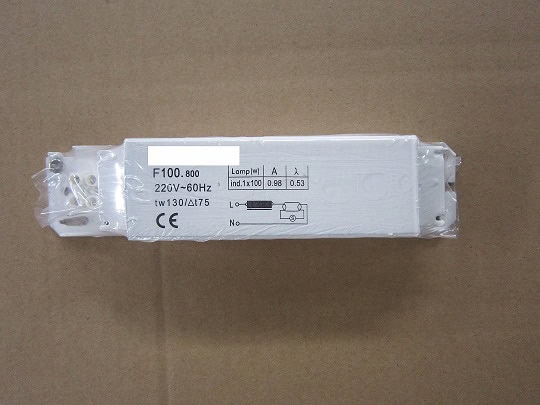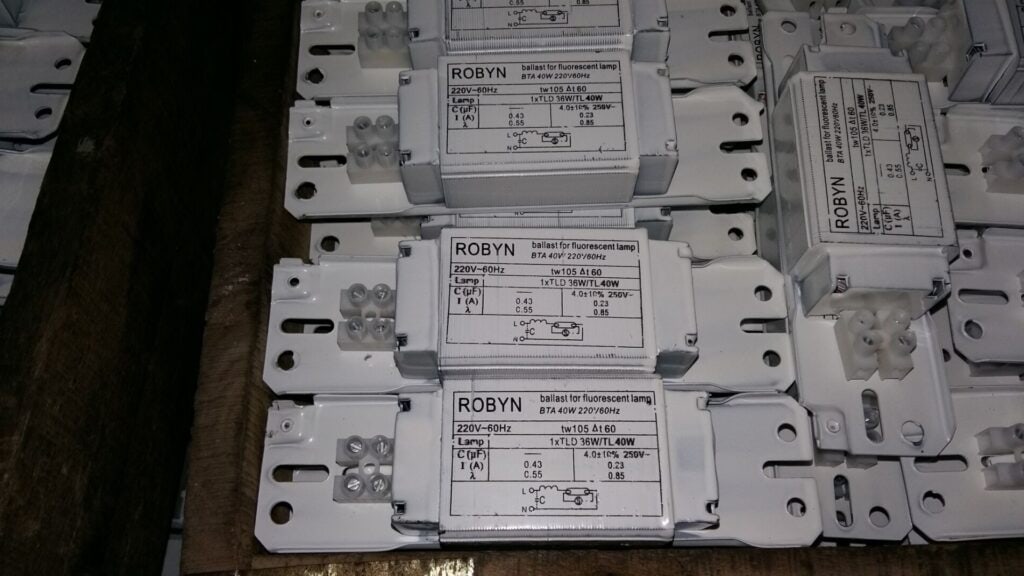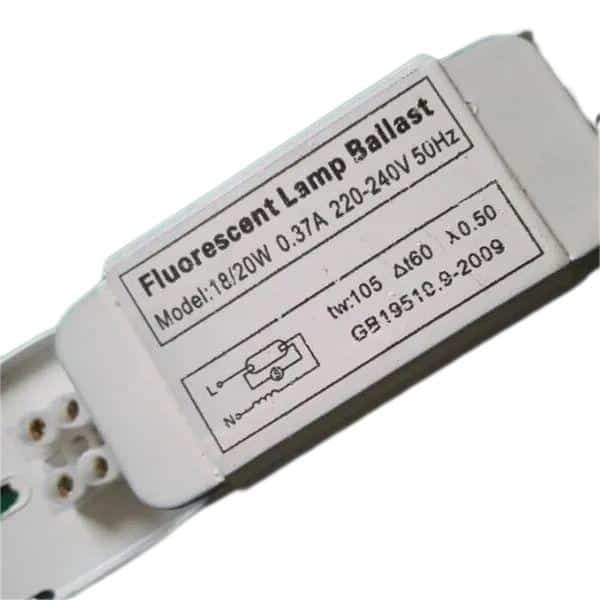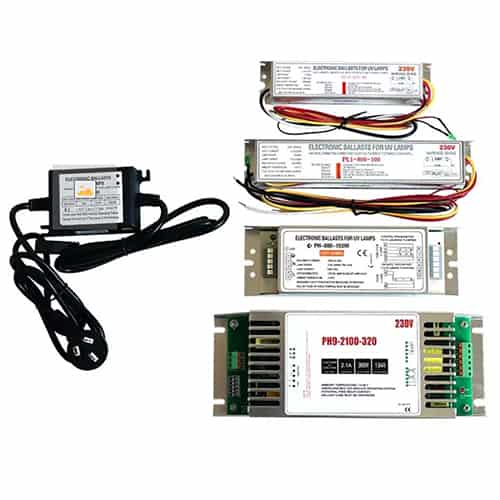A bad ballast can cause your fluorescent lights to flicker or not be very bright. The solution is to understand how long they last and how to take care of them.
Magnetic ballasts in fluorescent light fixtures usually last 10-20 years, depending on how much you use them, how you take care of them, and the environment they’re in. You need to check and replace them to keep your lights working well.
To understand how long a ballast will last, we need to talk about some of the things that affect how long it will last.
What is a Ballast, and How Does It Work?
A ballast is a crucial component in fluorescent light fixtures, responsible for regulating the current and ensuring the light operates efficiently. Fluorescent lamps require a high voltage to start, and the ballast provides this by controlling the amount of electricity that flows to the bulb. Without a ballast, the bulb would receive an uncontrolled surge of power, potentially damaging the fixture and causing a safety hazard.
There are two primary types of ballasts: magnetic and electronic. Magnetic ballasts are older technology, often found in older fixtures, and tend to be less energy-efficient. They use a magnetic core to regulate electricity flow. On the other hand, electronic ballasts, which are more commonly used today, employ electronic circuitry to control power flow, making them more efficient and compact. Both types can have varying lifespans depending on their environment, the frequency of use, and how well they are maintained.
Factors Affecting Ballast Lifespan
The lifespan of a fluorescent ballast is influenced by several factors. The most significant ones include the duration and frequency of use. Ballasts used in commercial or industrial settings, where lights are often left on for extended periods, generally have shorter lifespans than those in residential environments. In environments with 24-hour lighting, such as hospitals or large office buildings, ballasts may fail sooner than expected due to the continuous strain on their components.
Heat is another critical factor. Ballasts generate heat during operation, and excessive temperatures can degrade the internal components over time. This degradation shortens their overall lifespan. For example, ballasts installed in fixtures without adequate ventilation or in locations with high ambient temperatures, such as attics or factory floors, are more prone to premature failure. Keeping ballasts in well-ventilated and cooler areas helps reduce heat buildup and extend their useful life.
Additionally, environmental conditions such as moisture and dust can negatively impact a ballast’s performance. Dust accumulation can cause overheating, while moisture can lead to short circuits or corrosion of the internal components. Regular cleaning and ensuring the fixture is in a dry, dust-free environment can mitigate these risks.
How to Recognize a Failing Ballast
Recognizing the early signs of a failing ballast can save time and reduce the need for emergency repairs. The most common signs include flickering or dimming lights, particularly when the fluorescent tube itself is relatively new. This flickering occurs because the ballast struggles to maintain a steady flow of current to the lamp. Buzzing or humming sounds coming from the fixture can also indicate that the ballast is on its way out, particularly in older magnetic ballasts, which tend to make noise when the components are worn down.
Other signs include slow starting times. If your fluorescent lights take a long time to turn on or fail to illuminate fully, the ballast may no longer be able to provide the required power to start the lamp. Addressing these issues early can prevent more significant lighting problems down the line and help avoid the need for complete fixture replacements.
Average Lifespan of Different Types of Ballasts
The average lifespan of a ballast in a fluorescent fixture can vary based on the type of ballast used. Magnetic ballasts, which were commonly used in older fluorescent light fixtures, tend to last about 10 to 15 years. While they were reliable for their time, they are less efficient compared to modern electronic ballasts and generate more heat, which contributes to their shorter lifespan.
Electronic ballasts, on the other hand, are designed to be more efficient and last longer. These ballasts can often last between 15 to 20 years, depending on usage and environmental conditions. Since they produce less heat and operate more efficiently, they tend to have longer lifespans than their magnetic counterparts. Furthermore, electronic ballasts are designed to eliminate the buzzing sound commonly associated with older magnetic ballasts, making them more suitable for quiet environments like offices and schools.
Maintenance Tips to Prolong Ballast Lifespan
Extending the lifespan of a ballast requires regular maintenance and attention to environmental factors. One of the most effective ways to prolong ballast life is through periodic inspections. Checking for flickering lights, dimming, or buzzing sounds can help identify issues early, allowing for timely repairs or replacements before the ballast fails completely. Ensuring that the fixtures are clean and free from dust or debris can also prevent overheating, which is a common cause of ballast failure.
Proper ventilation around the fixture is essential for preventing excessive heat buildup. When installing new fixtures, it’s important to ensure that the ballast has adequate airflow, especially in tight or enclosed spaces. If the fixture is in a location with high ambient temperatures, like a warehouse or factory, consider using fans or other cooling methods to keep the temperature in check. Heat is one of the biggest enemies of ballasts, and minimizing it can significantly extend their operational life.
When Should You Replace a Ballast?
There comes a time when replacing a ballast is more practical than attempting repairs. If the signs of failure—such as flickering, dimming, or buzzing—persist even after troubleshooting, it’s time to replace the ballast. Ballast replacement is usually straightforward for a certified electrician, and swapping an old ballast for a new one can restore the fixture’s full brightness and efficiency.
For those using older magnetic ballasts, upgrading to modern electronic ballasts is recommended. Not only do electronic ballasts last longer, but they also save energy and are better for the environment due to their efficiency. Additionally, electronic ballasts provide smoother, flicker-free lighting, which can be especially important in settings where lighting quality is critical, such as in offices, schools, or healthcare facilities.
Final Words:
Fluorescent magnetic ballasts in fluorescent light fixtures typically last 10 to 20 years, depending on how much you use them, how warm they get, and how well you take care of them. You should check them and replace them to keep your lights working well.




